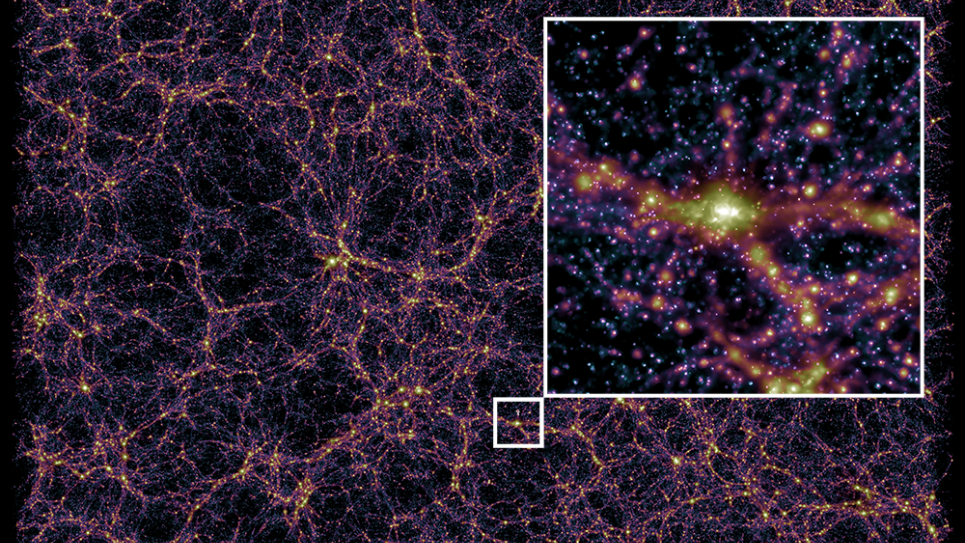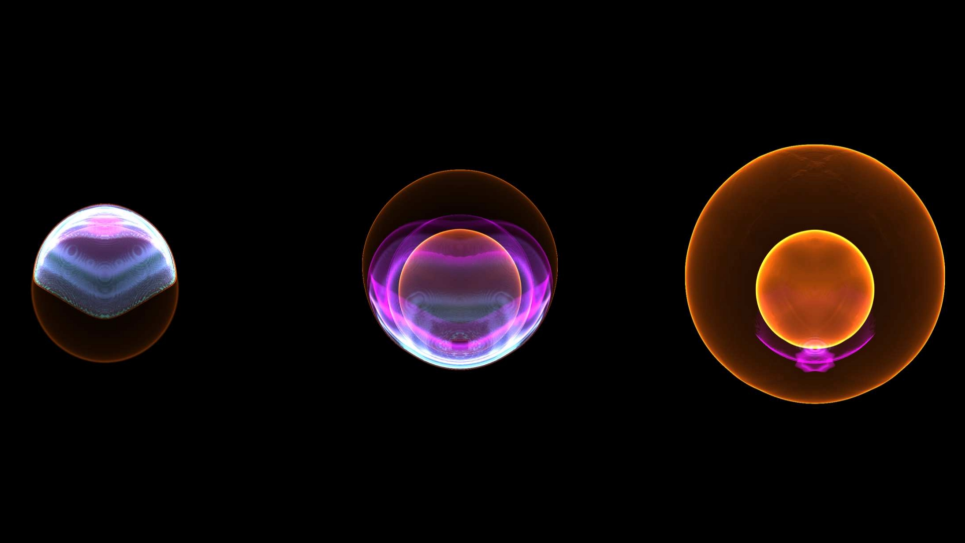
Visualization of the gas in a (576 Mpc/h)^3 volume CRK-HACC simulation. Shown are the density (brightness) and temperature (color) integrated along a slab spanning the full volume, including a zoom-in. Image: Michael Buehlmann and the HACC Team, Argonne National Laboratory

